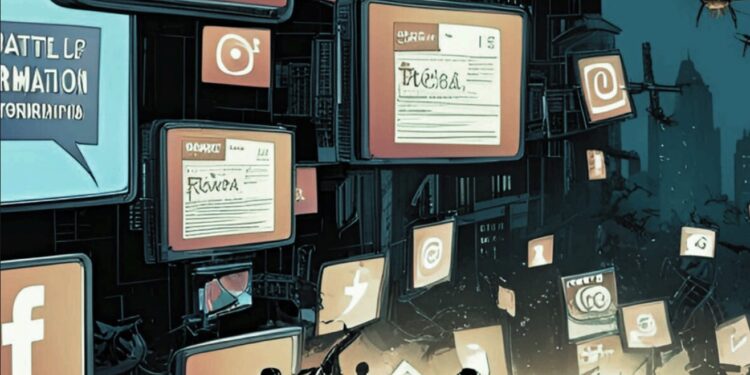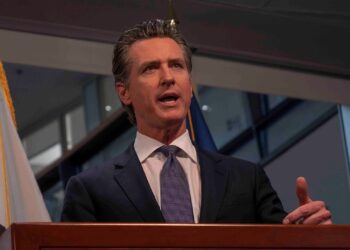In the aftermath of a deadly terror attack in Kashmir and India’s subsequent military response, social media platforms became a digital battleground that escalated tensions, polarised public opinion, and romanticised warfare, according to a new report by diaspora-led nonprofit The London Story (TLS).
Titled “Escalate: Social Media War during the India–Pakistan Conflict, April–May 2025”, the 50-page report analyses the online fallout following the April 24 bombing in Pahalgam, Jammu and Kashmir, which killed 26 people. India’s military response—dubbed Operation Sindoor—targeted militant camps in Pakistan-administered territory. But, as TLS argues, a parallel war was waged online.
“The May 2025 India–Pakistan conflict marked a dangerous evolution in modern warfare, where the frontlines extended into digital spaces,” TLS warns. “Social media became a catalyst for conflict—spreading hate, glorifying war, and undermining diplomacy.”
The Netherlands-based organisation, led by members of the Indian diaspora, identifies three key phases of digital conflict: polarisation, mobilisation, and escalation. Their findings raise serious concerns about platform accountability, the influence of AI propaganda, and the impact of unchecked nationalist rhetoric.
Polarisation: Muslims cast as internal enemies
The first wave of online responses focused on polarisation. Islamophobic posts surged in the days following the attack, often blurring the lines between Pakistani actors and Indian Muslims.
The report shows how Muslims were repeatedly portrayed as “traitors” or “proxy enemies.” Viral posts on Facebook and X (formerly Twitter) demanded the demolition of mosques and called for boycotts of Muslim-owned businesses.
One post cited in the report stated:
“Each mosque is a breeding ground. It’s time we raze them all.”
Another widely shared Facebook post read:
“No difference between Pakistan and Indian jihadis. Clean them both out.”
These narratives fuelled real-world consequences. TLS documents a sharp uptick in reported attacks on mosques in Uttar Pradesh and Maharashtra, as well as vigilante violence in mixed-population neighbourhoods. Economic boycotts—often coordinated via WhatsApp—targeted Muslim traders and eateries in Delhi, Bengaluru and Ahmedabad.
Nupur J Sharma is the Editor in Chief of OpIndia – a far-right news media outlet, which is accused of creating Islamophobic controversies.
Mobilisation: Mythology meets militarism
In the mobilisation phase, digital influencers—many with ties to the ruling political establishment—amplified calls for military action, using AI-generated content and mythological symbolism to frame the conflict as a righteous civilisational war.
AI-generated videos depicted Indian soldiers protected by divine figures such as Hanuman and Shiva. Hashtags like #DharmaYudh and #SindoorForBharat trended across X and Instagram. One post proclaimed:
“This is not a political conflict. This is a dharma yuddh—a war to preserve Sanatan Dharma.”
The report documents how prominent Hindu nationalist figures shaped and amplified this war rhetoric. Shefali Vaidya, a self-described “proud Hindu” with over a million followers, posted:
“Every single jihadi who thinks Kashmir belongs to them, needs to be eliminated. No mercy.”
(Source – TLS report, p. 32)
Nupur Sharma, formerly a BJP spokesperson, returned to prominence during the conflict, sharing a now-deleted video urging the government to “teach Pakistan a lesson it won’t forget—even if it means total war.”
Suresh Chavhanke, editor of Sudarshan News, repeatedly posted inflammatory content calling Indian Muslims “internal enemies.” In one video that garnered over 3 million views, he stated:
“This is not just war with Pakistan—it is war with every anti-national traitor living among us.”
(Source – TLS report, p. 34)
These voices, amplified by coordinated networks and algorithmic boosts, normalised calls for mass violence and stifled dissent, the report argues.
Escalation: Nuclear war enters the discourse
As the conflict intensified, digital calls for total war began to dominate online narratives—despite international pleas for restraint. TLS shows that even verified accounts began invoking nuclear options as a form of righteous retaliation.
A prominent X user posted:
“Strike now. Strike hard. Let them taste fire. Even if it means mushroom clouds — at least we’ll go down like gods.”
(Source).
Another popular Facebook video, viewed over 2 million times, used CGI to simulate an Indian nuclear strike on Islamabad, closing with the message:
“For every tear in Pahalgam, a firestorm in Lahore.”
(Source – TLS PDF, p. 36).
TLS warns that such normalisation of nuclear rhetoric poses grave risks:
“The threat of nuclear war became dangerously normalised in digital discourse… despite global concern over the potentially irreversible humanitarian and environmental consequences.”
Platforms complicit, watchdog says
TLS is sharply critical of social media platforms, accusing them of failing to moderate incitement and misinformation. The report notes that inflammatory content—particularly when shared by verified pro-government influencers—received algorithmic amplification.
While some posts urging calm or advocating peace were flagged or throttled, war-mongering content remained widely accessible and monetised through ads and user engagement.
“Digital spaces were instrumental in building mass support for military action,” the report states. “The distinction between external enemy and internal citizens collapsed online.”
The report calls for urgent international regulation of online platforms during periods of armed conflict, including real-time content auditing, watermarking of AI-generated visuals, and transparency in algorithmic amplification.
Related: Arrest of academic Ali Khan Mahmudabad
Although not covered in TLS’s report—because it was finalised before the incident occurred—the arrest of historian and academic Professor Ali Khan Mahmudabad adds a sobering footnote to the broader climate of digital repression.
Professor Mahmudabad, a scholar at Ashoka University, was arrested on May 18, 2025, for social media posts that criticised Operation Sindoor and drew attention to hate crimes and mob violence. He was granted interim bail three days later by India’s Supreme Court on the condition that he refrain from public commentary.
While not referenced in TLS’s analysis, his case underscores the risks faced by those who voiced dissent during the conflict—and the narrowing space for critical discourse online.
A call for action
TLS concludes its report by urging governments, civil society, and tech companies to treat online incitement as a national security issue. The group advocates for:
- Mandatory watermarking of AI-generated content
- Greater transparency in platform algorithms
- Clear protocols for digital conduct during armed conflict
- International oversight of digital platforms during crises
“Online hysteria actively undermined diplomacy,” the report concludes. “As international actors called for peace, viral posts urged the government to reject dialogue and escalate violence.”
For a detailed analysis, read the full report by The London Story here: Escalate: Social Media War during the India-Pakistan Conflict, April–May 2025.











